On the one hand, deer is a native species and a beautiful creature. On the other hand, the deer population is way out of balance for a healthy ecosystem — in other words, beyond what is called the “carrying capacity” of the land. This is true not only in the suburbs, but out in the wild. It affects the health of our forests!
Woodlands are particularly hard hit, with deer eating anything they can find just to survive — and this includes tree seedlings that would otherwise be the basis for continuing healthy forests. This isn’t in the best interest of people, other wildlife, or the deer themselves.
Killing off predators is probably a big reason the deer population grew out of control. Why can’t we humans respect functioning ecosystems!
I was surprised to learn that many decades ago the deer population was so low that spotting a deer was a news item! I’m glad that the population rebounded, so we haven’t had to add yet another creature to the list of extinctions.
BUT policies (often promoted by hunters, I’ve read) that encouraged the deer population were too successful, which isn’t good for the health of our natural areas, for our communities, or even for the deer.
In the cities and suburbs

This deer family is calmly munching on some of the vegetation in our front yard. But we have so many plants, we don’t notice as much damage as there might be in yards with fewer plants. We also have quite a few plants, such as spicebush, that aren’t “tasty.”
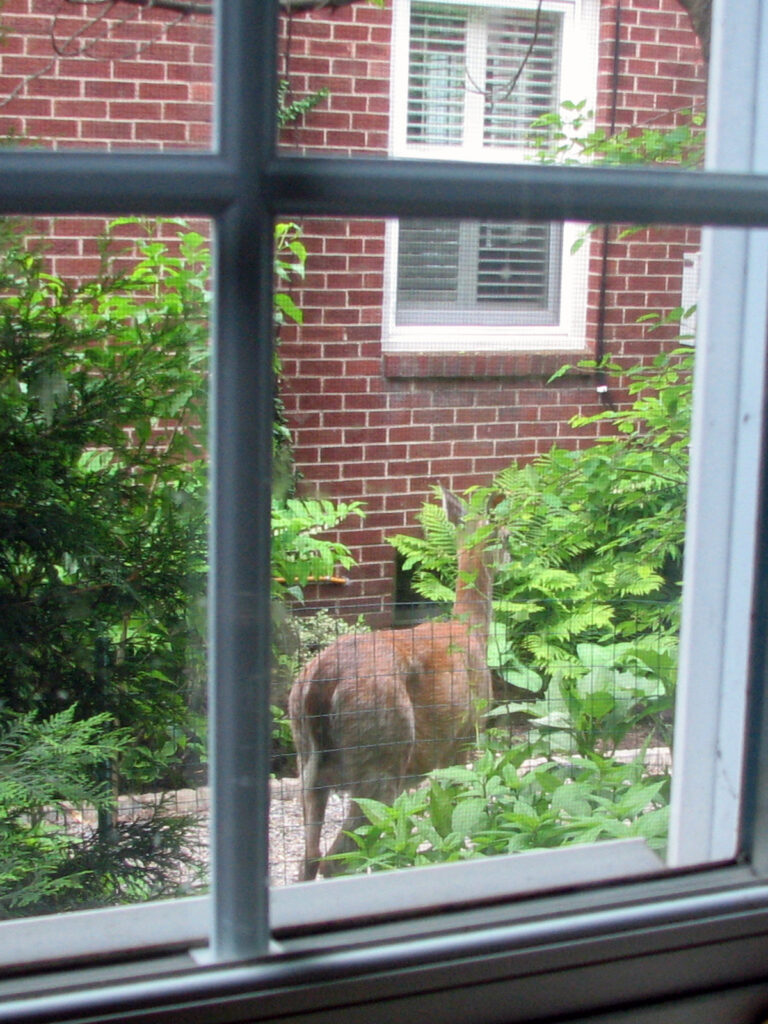
This deer is calmly walking between our house and our neighbor’s house. But our neighborhood doesn’t have the resources to support these large mammals.
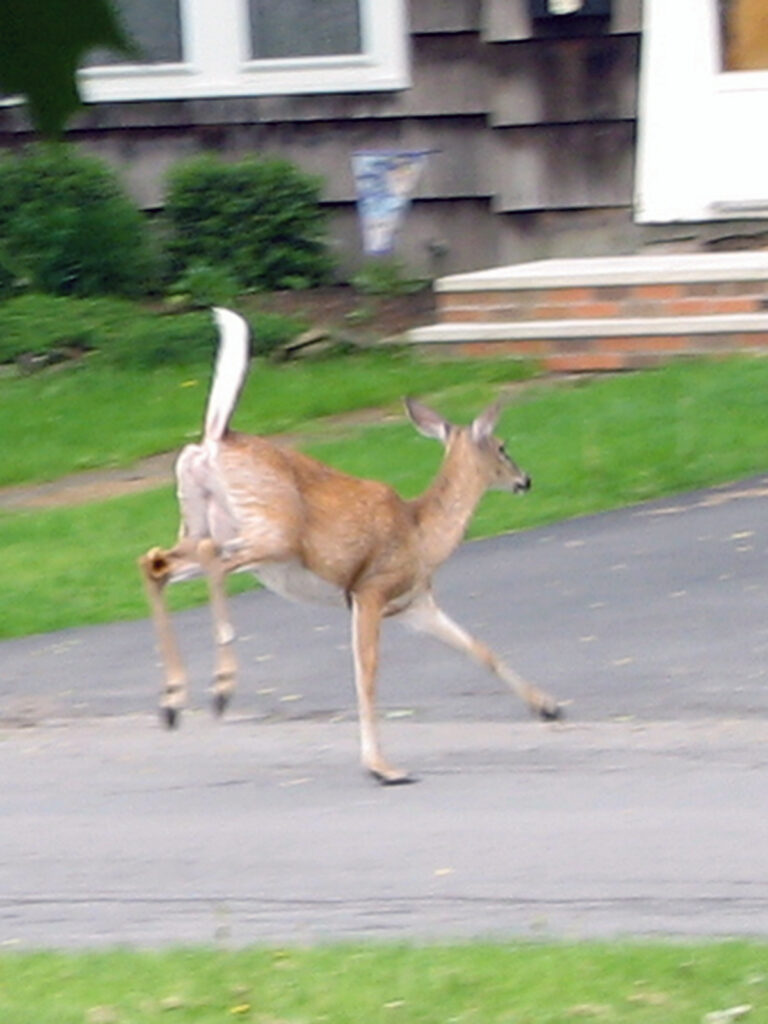
And car-deer collisions are a hazard not just to deer, but to people.
This deer is running across our residential street.
Home landscapes
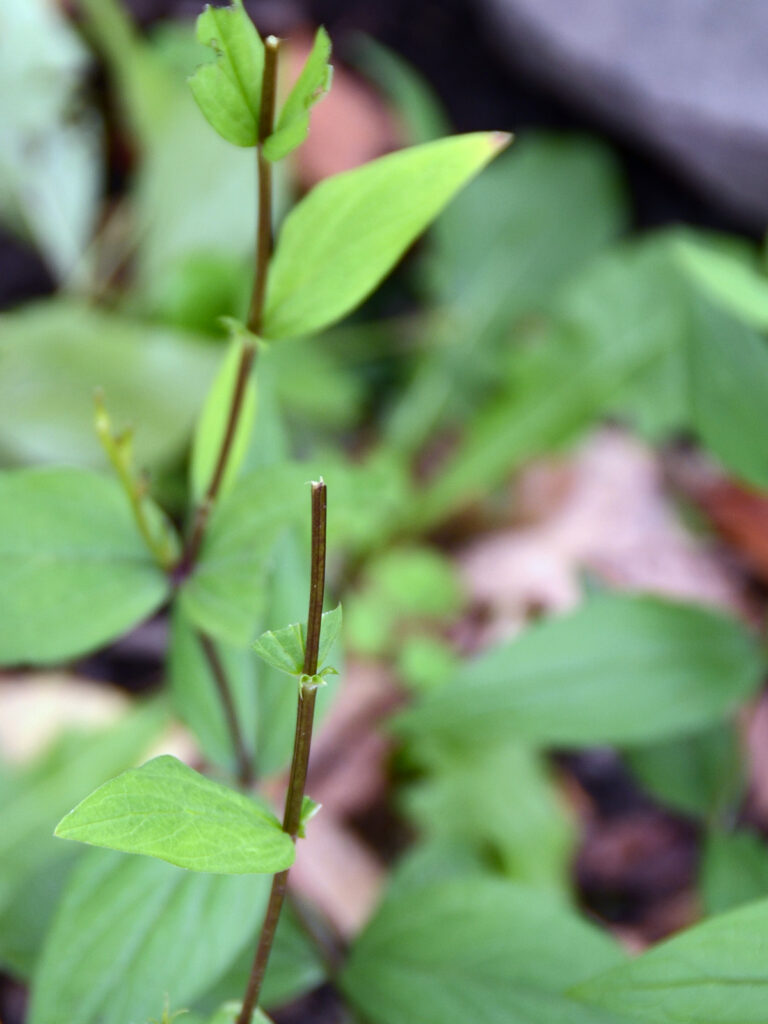
No one needs to tell homeowners what a burgeoning deer population means for their home landscape. Sadly, people who would otherwise want to plant lots of native plants are discouraged from doing so. Why buy plants only to have them eaten to the ground?
Although deer aren’t a big problem in our yard, many people find it very discouraging, and they often give up planting anything other than deer-resistant plants, which aren’t always beneficial natives. A tragedy!
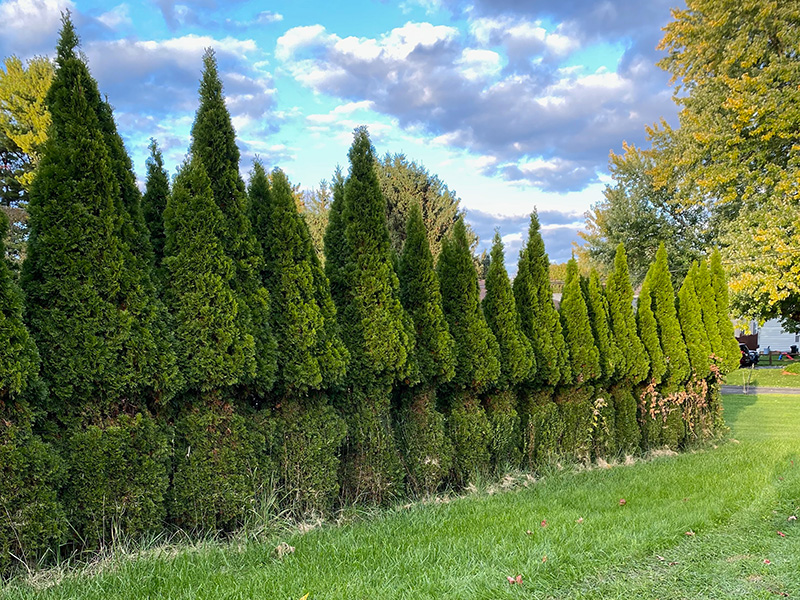
What is this line on the row of arborvitaes we saw on one of our neighborhood walks? Above where deer could browse!
Solutions?
Clearly, we have a problem that requires a community conversation. So far, it appears to me that this conversation has been sabotaged by groups at the extremes: hunters who simply want a large deer population for hunting, but also by people who are unwilling to consider many effective ways to reduce the population. (Some of the initially more-appealing options, such as birth control, do not appear to be viable solutions.)
We appreciate and value wildlife, but we most value healthy ecosystems and believe healthy ecosystems are ultimately the best for both animals and people.

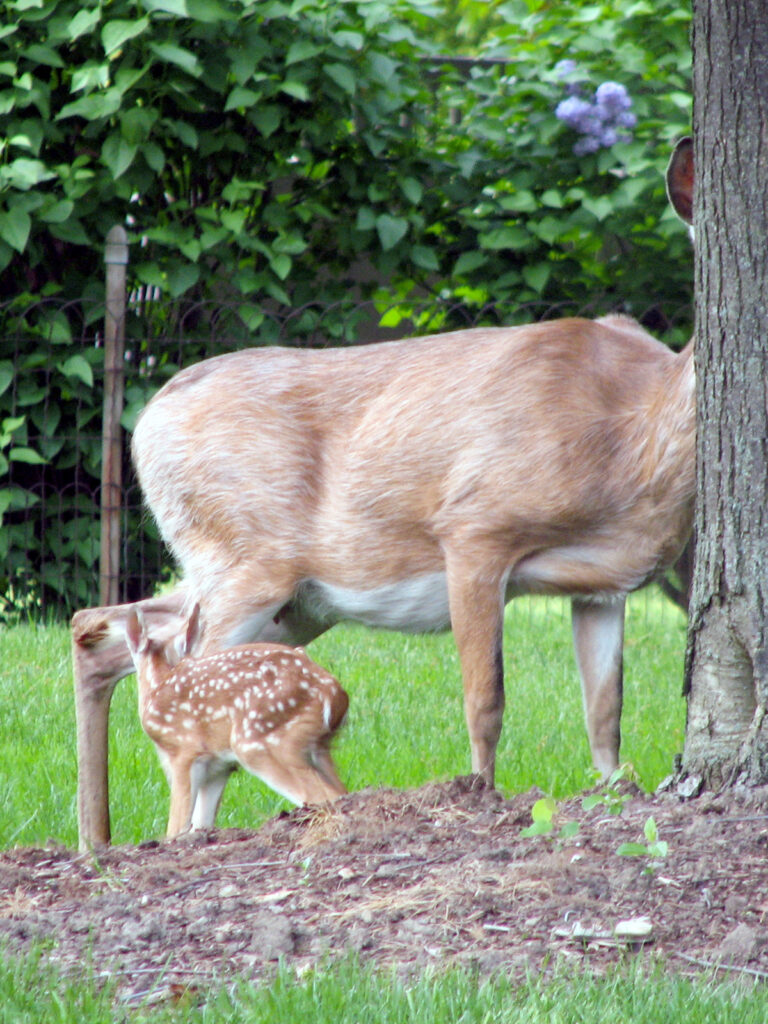
And clearly, we want any solutions to be humane. Sadly, we’ve come to the conclusion that this will probably have to include culling the herd — but humanely, not just letting anyone with a gun go shooting wildly in the woods.
And the resulting harvest should be used for food, food pantries being a likely destination. (Anyone who is not vegan or not carefully sourcing their food is already participating in inhumane treatment of food animals anyway …)
Whatever route is chosen, a solution must be found as soon as possible.
Solutions in our own yard
As homeowners, we can’t solve society’s problem with deer, but we have come up with some solutions at least in our backyard, where we grow our fruits and vegetables.
Having much of the backyard bordered by our tall hedgerow helps a lot since this provides a natural barrier.
But one year they took a heavy toll on our vegetable garden. Our solution was to add deer fencing on top of our regular fencing. Actually, after figuring out where they were coming in and leaving, we didn’t even have to add fencing everywhere, just in a few spots where there wasn’t already tall shrubs.
This extra deer fencing added to the top of our existing 5-foot fence did the trick. And it’s pretty much invisible except for the thin pieces of wood extending up from our fence where the net attaches.
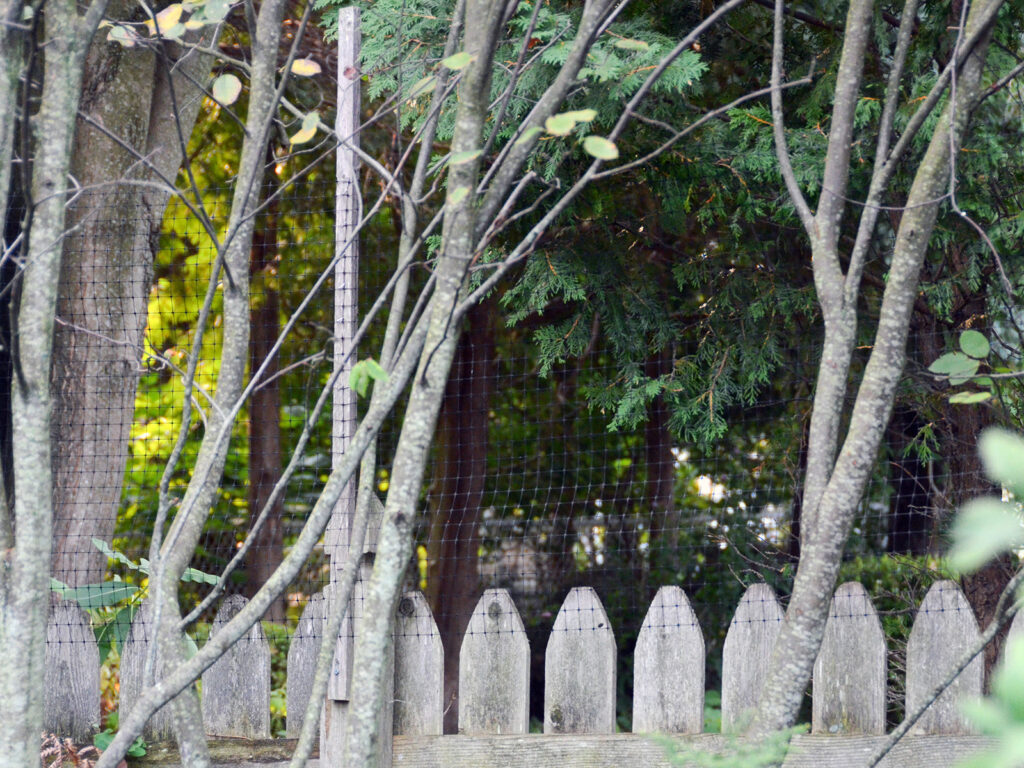
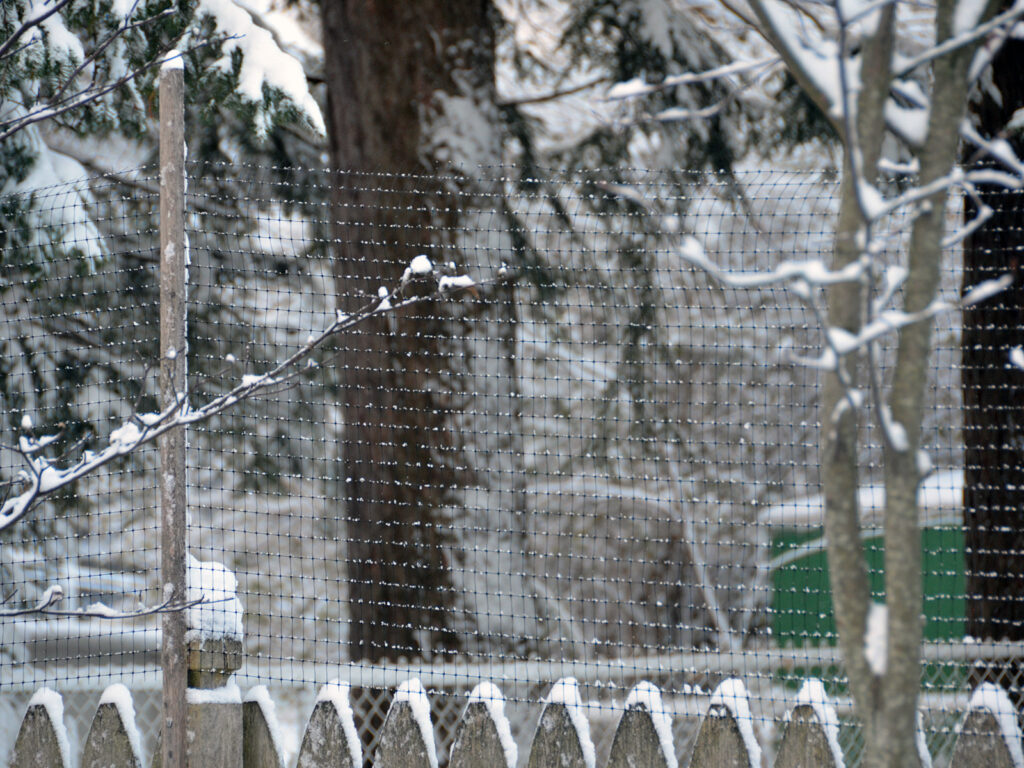
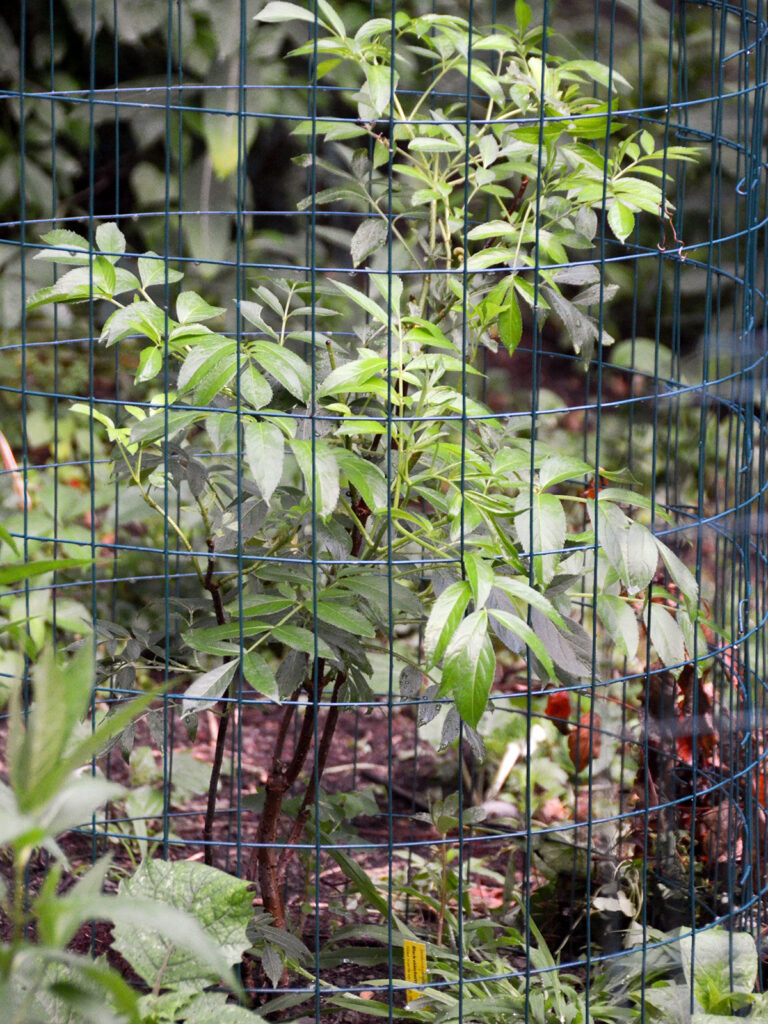
In the rest of the yard, at least when they’re getting established, we’ve fenced some individual shrubs that they seem to munch. The fence protected this young elderberry, but now that it’s grown, it no longer needs protection.
But, again, this helps only our yard, not the greater ecological issue of a too-large deer population distorting the ecosystem beyond our yard. This is a critical situation.
Resources
- Ecological Gardening:
- Native Plant Trust:
- Ecological Landscaping Association:
- The Humane Gardener:
- Thorny shrubs: When plants protect plants
- Q&A: Bring back the brambles!
- Deer eat my garden—and it flourishes
- Gardening for deer
- Gardening among hungry mammals – a plant list of resilient plants!
- EcoRI News:
- What is a priceless forest worth? – Are forests managed for hunting interests?
- Audubon at Home:
- Cool Green Science:
- NYS DEC:
- Deer management program – gateway to history of deer management, landowner’s resources, citizen task force etc. in NYS
- PennState Extension:
- Non-lead ammo for deer-hunting – to protect birds and other wildlife
- Connecticut Dept of Energy and Environment:
- Deer nuisance problems – a fact sheet summarizing solutions
- Yellowstone National Park:
- Univ. of Arizona:
- Good Fruit Grower:
- Univ. of Nebraska:
Reflections
Nature knows no indecencies; man invents them.
~ Mark Twain
